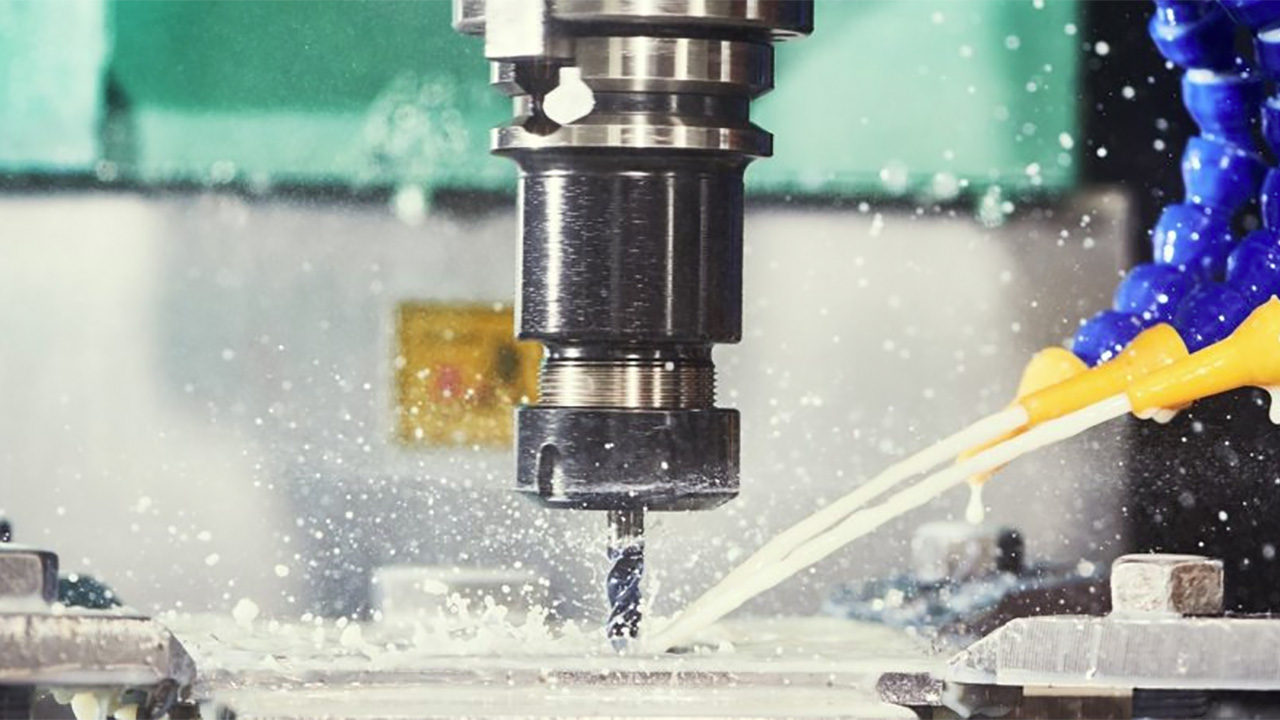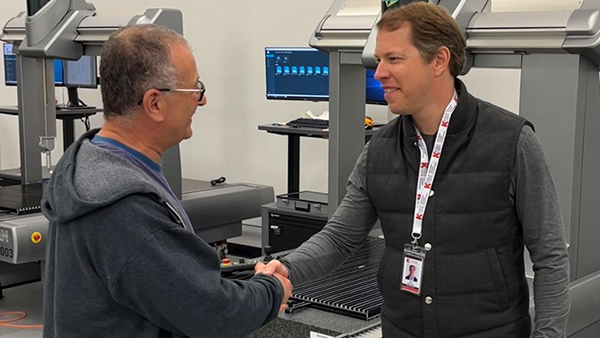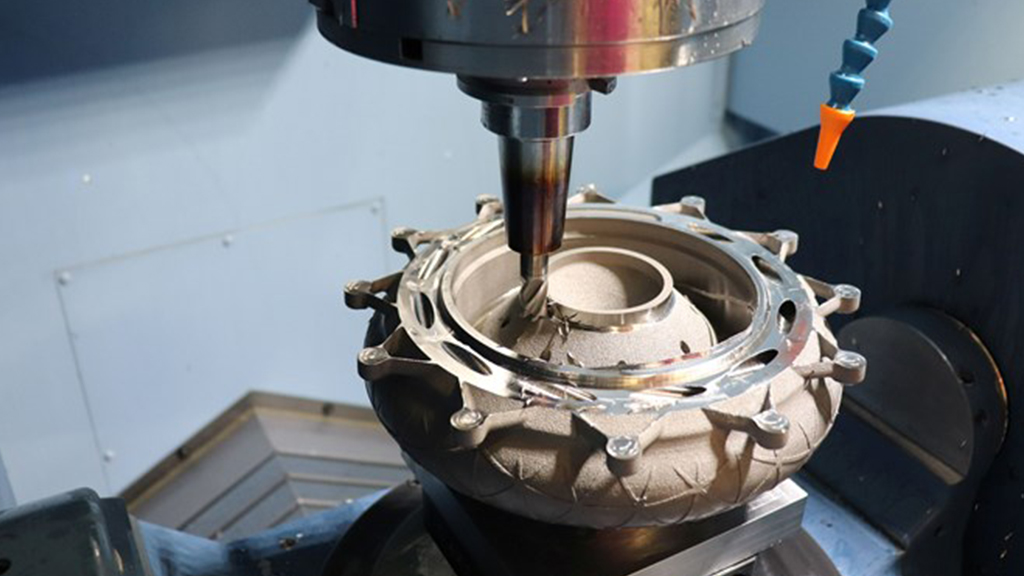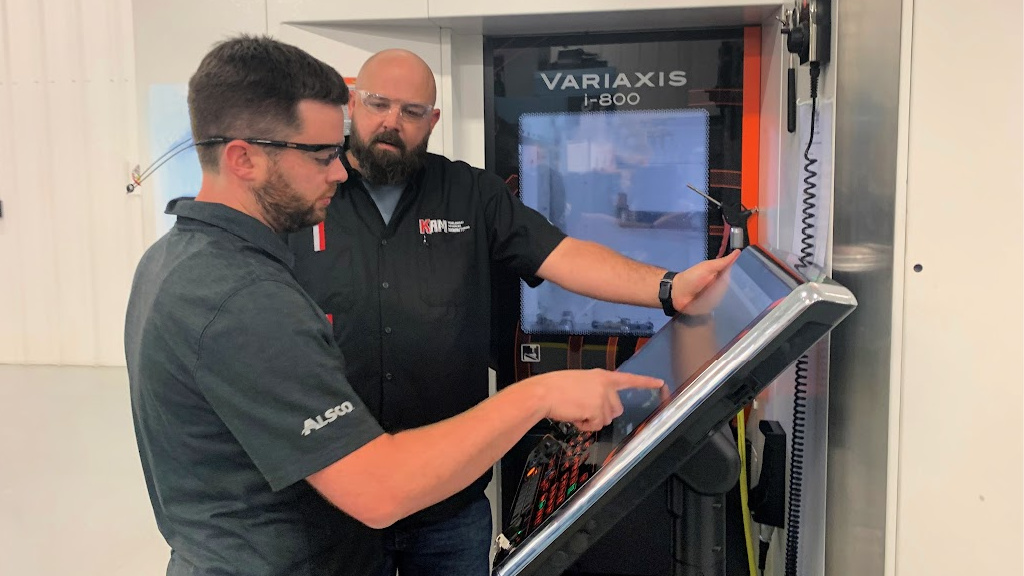Our call is scheduled for 10 a.m.
But my phone doesn’t ring at 10. And it doesn’t ring 30 minutes later, which to many “important” people is the same as “on time.” And it doesn’t ring one or two hours later, as often happens with “famous” people who see appointments as a suggestion, not a commitment.
Nope. Nascar driver Brad Keselowski doesn’t call at 10 a.m.
He calls at 10.01 a.m.
And spends the next few minutes apologizing for being late.
Because Brad Keselowski isn’t just a 27-time Nascar Cup Series race winner, and the 2012 Cup Series champion.
He’s also an entrepreneur and businessman who just launched a new company, Keselowski Advanced Manufacturing. The 70,000 square-foot hybrid manufacturing facility in Statesville, N.C., houses tens of millions of dollars in equipment and boasts 30 employees, with plans to expand to nearly 100 employees by year-end.
But he’s not doing it alone. KAM has built strategic partnerships with companies like GE Additive, ALSCO, Pinnacle X-Ray Solutions, Big Kaiser Precision Tooling, and Mazak Corporation.
The goal? Use sophisticated engineering, automated machining, additive manufacturing (think 3-D printing but with a variety of materials), subtractive technologies (think milling, machining, etc.), and high-tech manufacturing techniques to create new products and lower costs and reduce waste and decrease run quantities….
In short, better, faster, cheaper.
It’s a business with huge potential. As an industry, advanced manufacturing is still in its early stages, even though the need for short-run, highly-specialized, even one-off pieces and parts has never been greater.
But it’s also a business that requires huge amounts of capital to launch.
So why did someone as successful–and busy–as Brad decide to start a manufacturing business? Good question. So I asked him.
Your success in racing naturally creates a variety of opportunities, some surely that didn’t require significant capital. So: Why manufacturing?
The inspiration behind KAM starts with my family.
My dad and uncle would race in the summers and in the winters convert the shop so they could do engineering and low-volume manufacturing work. Someone from General Motors engineering might call and ask them to take a look at problems they were having with Hummers. Or a guy down the street would need to put a roll cage in a drag racer.
They couldn’t make a living from racing, so basically, they funded their love of racing through their abilities as craftsmen and fabricators.
I grew up in that environment. I watched my father and uncle come at things with an engineering approach…but also have manufacturing talent to make their engineering ideas actually work.
That blend of talents is relatively rare.
Like any little boy, I was impressionable. And amazed by what they could do.
Then, as I started to progress with my own racing career, I had the opportunity to drive for some legendary teams. I’ll never forget the first time I walked into the Hendrick Motorsports CNC shop. That was my first real glimpse at advanced manufacturing tools and it left a huge impression on me. And now I drive for Penske.
To be great at motorsports you need to have outstanding engineering capabilities and outstanding manufacturing capabilities. So, as I was building my truck team [Brad Keselowski Racing], I didn’t want to just buy everything. I wanted to be able to build from scratch. That way, we could better control our costs, improve our quality…basically rely on our own engineering skills and our own fabrication skills.
That’s what we tried to do. Unfortunately, I never got to see that come to fruition. The market made it so difficult to sell sponsorships that I couldn’t raise all the capital needed. I was losing money on the operation as it was and was leery of investing even more.
All of which led to you saying, when we talked in late 2017, that you decided to shut down your Truck Series team so you could build a business that might someday create a financial foundation for a racing operation. Like Roger Penske or Rick Hendrick, to name just two.
I had been thinking about that for a while. In May 2017, I was at a conference and ran into Joe Hofmann. Joe and I are friends, but we also worked together at Penske. He ran the manufacturing side of Team Penske for three years.
He left the year after I won the championship to start Fibreworks, a carbon fiber engineering and manufacturing company. He didn’t have a lot to invest…and now he has a $10 million company. I was hugely impressed. One, he helped me win a championship, and two, he helped create a successful business from scratch.
So I asked him, “If you could do it all over again, what would you do differently?” I was considering advanced manufacturing but hadn’t figured out where I wanted to go.
He said if he could do it all over again, he might have gone into 3-D printing.
That really piqued my interest. He has a great business, he’s killing it…but after he told me his thoughts on additive manufacturing, I dedicated myself to researching, going to conferences, visiting factories in Germany, Georgia, Texas…trying to fully understand the technology at every level.
Ultimately, I realized it was a business I could be passionate about. I don’t want to be involved in a business I don’t like, even if I can make money in it.
So I made the decision to shutter the Truck Series team and start KAM.
Which means finding the right people. And sufficient capital.
Finding great people is hard, but not as hard as you might think. There are so many people excited about this technology; that alone helps us recruit people. Plus, our business is in an area that is surrounded by tremendous motorsports talent with skills that transfer fairly easy to this kind of technology. This area is filled with people who love to engineer, love to manufacture…basically love to build cool things.
We’re not going to build swing sets. [Laughs.] We’re going to build things that are potentially world-changing. People naturally get excited about that possibility.
As for the financial side, I liquidated the truck team assets to generate some capital, and I’m making personal investments, too.
Some entrepreneurs who have a public profile choose, for a variety of reasons, not to put their names on a new business. You went the other way.
There was a lot of debate about what to name the company, but I wanted it there. Not out of vanity, but because I want to not just show, but also truly feel, an extremely high level of accountability to the company.
When your name isn’t on it, it’s easy to walk away if it doesn’t work.
Who do you see as your ideal customer?
Early on, we’re targeting several sectors: Aerospace, automotive, oil and gas, tool and die. Take aerospace: A 3-D printed fuel nozzle can reduce parts costs, reduce fueling time, improve tarmac turnaround times…that’s the type of gain that these technologies can provide. The only limit is our imagination.
Then, once we get our feet firmly under us, we want to make a real push into medical. The technology is game-changing for medical.
Quick story: A man was in a really bad crash and needed facial reconstruction surgery. A company built a 3-D implant and inserted it to help assist with the surgery. That sounds easy in theory but is incredibly difficult in practice: scanning the side of the face that’s not damaged…engineering parts and pieces…building parts and pieces…quality checking to make sure it’s perfect…and delivering in a timely manner, since the more time that goes by, the harder it is to repair.
That kind of work absolutely fascinates me because it’s the kind of work that helps improve the human experience. You can effectively change someone’s life…but only if you do it right every step of the way.
That’s partly why we built our facility beside an airport, and it’s also specific to advanced engineering and manufacturing capabilities.
Those are the types of solutions we’re very interested in providing.
What did you learn from running your truck team that will help you run KAM?
In any business, you have to have the best people and the best tools. If you’re missing one or the other, you’ll fail.
If you hire great people, they can become a great team. If you give them the right tools, they can do great things.
I’ve also learned a lot from Roger Penske that I’m applying to KAM. One example is our facility: It’s really important to me to provide a state-of-the-art facility and work environment that shows employees you’re committed to them.
You can say you respect your employees…but it’s much better to show it.
How will you split your time? In effect you have two full-time jobs.
[Laughs.] Kind of. Steve Fetch runs our day-to-day operations. He ran quality at his previous job, and I recruited him because I wanted the person who runs the company to be committed to quality above everything else.
Quality comes first–everything else follows from that.
Many people with multiple pursuits say the time away is actually beneficial.
Absolutely. One thing it gives you is perspective.
We typically fly back from races on Sunday nights. Since the airport is right next door, I often drive over and I walk the factory floor late at night. That’s actually one of my favorite things to do. Even though there’s no one in the building, I get a feel for what’s going on…and it actually helps me unwind from the race.
And my business experience helps me on the racing side. If something at the track doesn’t happen the way I want it to happen–whether it’s people, or parts, or processes–I have perspective on how difficult it is. I have a lot more empathy for the people involved. And I can speak their language.
A certain degree of fear comes with the startup territory. What worries you?
Oddly enough, I’m more excited than nervous. For one thing, the stability I have on the motor sports side helps quell some of those fears. As with any business, you’re worried about consuming capital…but I have another income stream to supplement that. So I feel fairly comfortable.
But more importantly, I wouldn’t be involved in this if I didn’t believe in it.
If you think about it, I’m in the belief business. When I get in the race car, I have to believe in the people who built it. I have to believe I can race against the best drivers in the world and win. A huge part of my job is believing. And a big part of my job as a race car driver is to help build a team.
And that’s what I’m doing here: building a team. So that gives me a lot of confidence.
Plus, there’s this: The only limit we have to what we can do at KAM is our imagination. Tools are important…but what you do with those tools is what makes all the difference.
We have a great team, we have great tools, lots of things are coming together all at once….
So no, I’m not scared.
I’m excited. I can’t wait to see what we’re able to do in the years to come.
(This article was written by Jeff Haden and published on Inc. Click here for the original article.)








